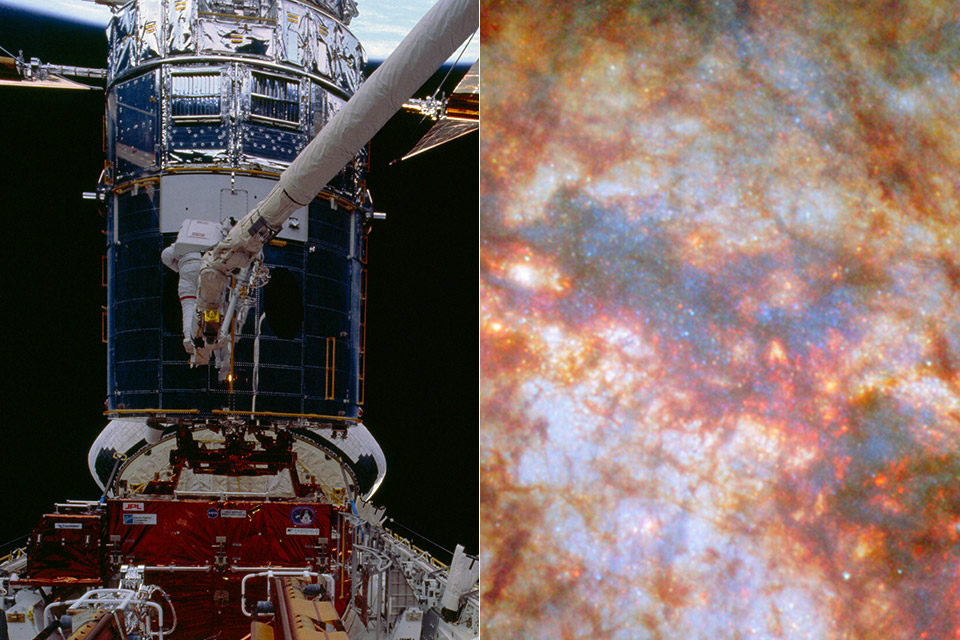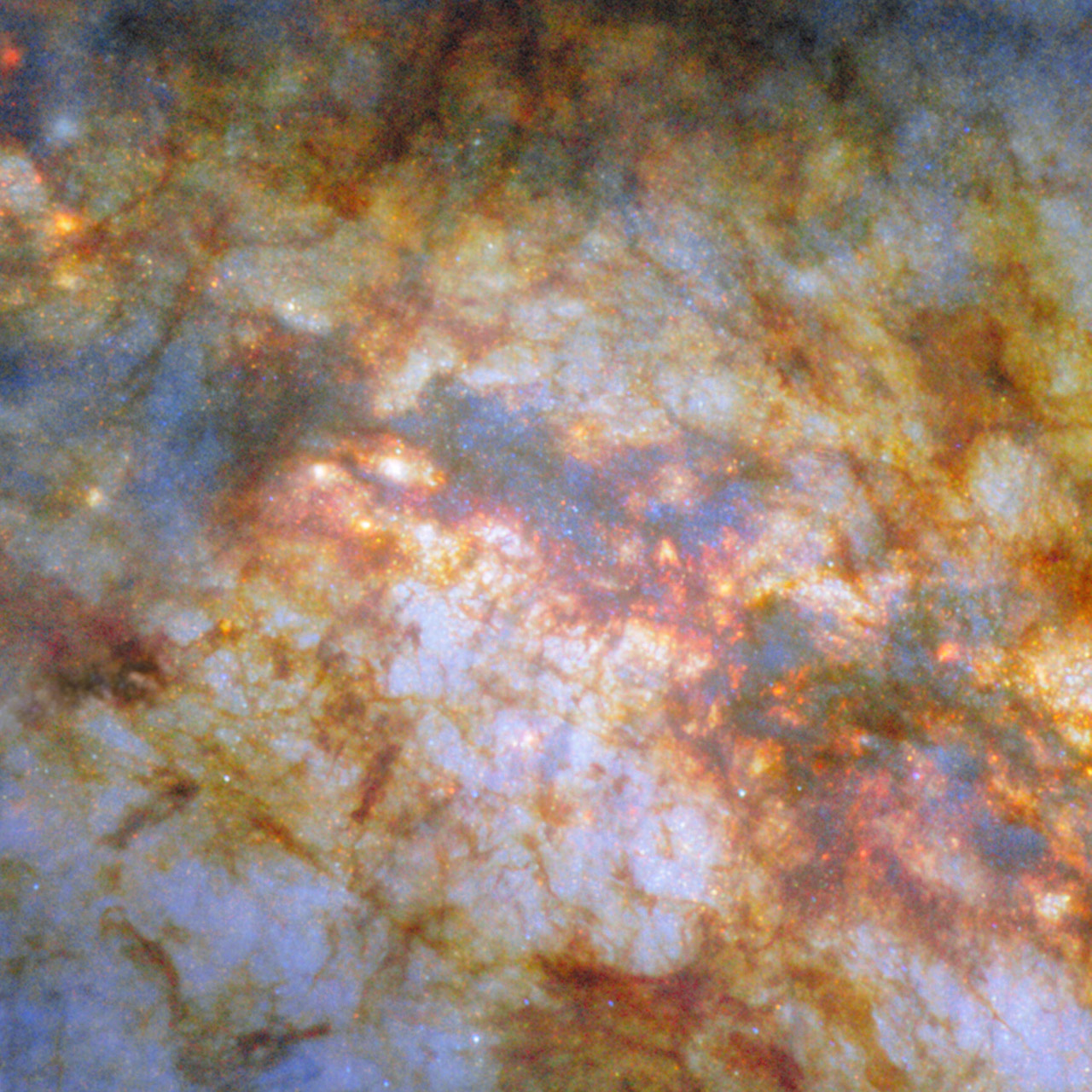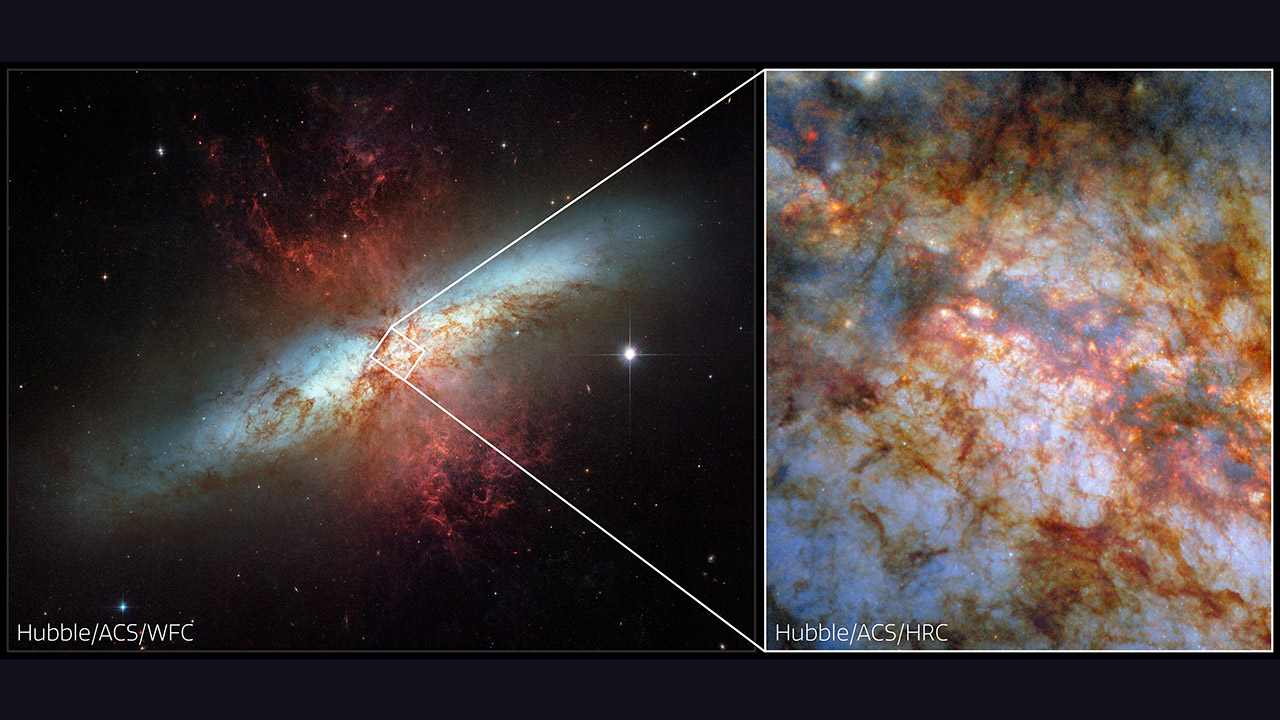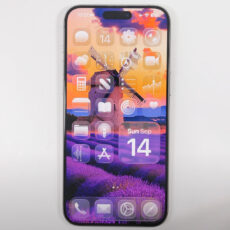Hubble Captures Smoldering Heart of Cigar Galaxy (M82) 12 Million Light-Years Away


M82, also known as the Cigar Galaxy, is 12 million light-years away in the constellation Ursa Major. NASA’s Hubble Space Telescope snapped this image in stunning detail, resembling a cosmic smoldering cigar with a heart spewing out stars at warp speed.

M82 is a starburst galaxy, meaning stars form 10 times faster than in the Milky Way. This frenetic pace creates giant star clusters, which pack hundreds of thousands of stars into compact, brilliant blobs. Hubble’s Advanced Camera for Surveys (ACS) High Resolution Channel zoomed in on these clusters, revealing details that previous images couldn’t.

LEGO Icons Shuttle Carrier Aircraft Building Set for Adults – Spaceship & Airplane Model Kit for Adults,…
- 2 AVIATION LEGENDS, 1 BUILD – Recreate the iconic Boeing 747 and NASA Space Shuttle Enterprise with the LEGO Icons Shuttle Carrier Aircraft (10360)…
- DEPLOY LANDING GEAR – Turn the dial to extend the massive 18-wheel landing system on your airplane model, just like real flight operations
- AUTHENTIC FEATURES & DETAILS – Remove the tail cone, engines, and landing gear from the NASA shuttle and stow them in the cargo bay during flight

A horizontal collage accompanies the close-up with two views of M82 side by side. On the left is a 2006 ACS Wide Field Channel image of the whole galaxy, a blue cigar with plumes of red gas exploding from the top and bottom. On the right is the High Resolution Channel’s new view of the core, where clumps of gas and dust hide the star clusters. This comparison shows how Hubble’s technology and our understanding of M82 have grown. The Wide Field Channel is good for wide shots, but the High Resolution Channel gets deeper, showing the gritty details of a galaxy on overdrive.
What makes M82 so cool is not just the star formation but how its surroundings affect its appearance. The dust and gas, shaped into streaks and clumps, form a cosmic curtain, dimming the light from the stars behind it. Hubble’s filters caught this interaction at wavelengths from ultraviolet to near-infrared (330 nm to 814 nm).
Hubble Captures Smoldering Heart of Cigar Galaxy (M82) 12 Million Light-Years Away
#Hubble #Captures #Smoldering #Heart #Cigar #Galaxy #M82 #Million #LightYears








